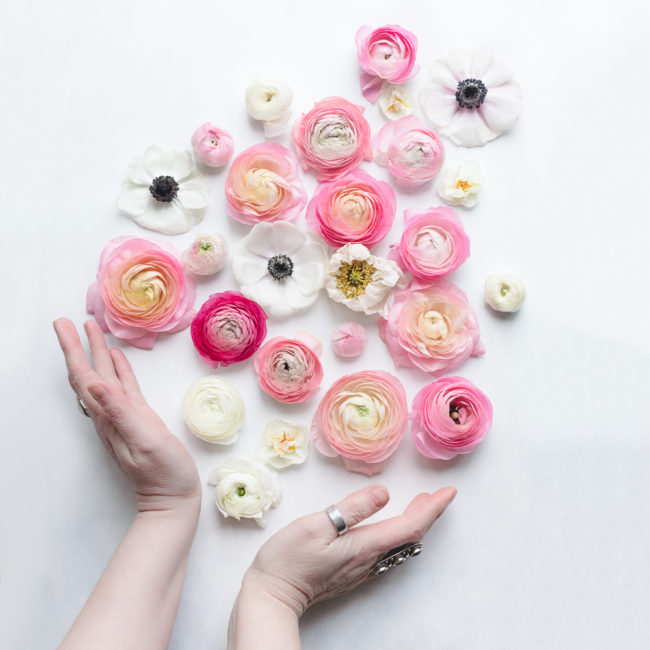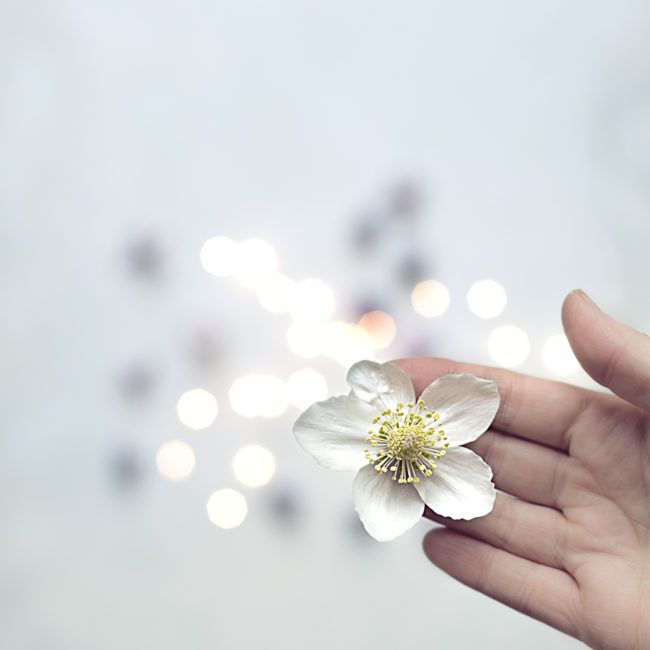
Starting the year with intention

Do you make new year’s resolutions? I don’t. I tried a few times when I was much younger, but I never managed to actually keep them, and I ended up feeling frustrated and disappointed with myself.
I also dislike all the “new year, new you” kind of talk. The idea of making big changes and starting the year at full speed doesn’t suit my nature at all – too much pressure, too many expectations, and the assumption that, after the holidays, I’m full of energy and vitality.
The truth is, I need a slow start of the year. I spend the first couple of weeks figuring out how I want my life, work, and creative journey to feel for the next twelve months, and then I set my intentions accordingly.
I do make plans, of course, but they’re flexible, to leave room for possibility, serendipity, and new opportunities.

This is something I’ve been doing only for the past few years though. When I first started working on my own, I didn’t really know how to organise my time, so I tried making detailed plans following a rigid structure.
It didn’t work.
I tend to work in bursts, and after a period of intense productivity I usually need some down time to wind down and recharge my batteries, ready for a new project. These bursts of energy are not set in stone; they tend to change with my energy levels and mental health, so it’s quite hard to predict how much I’ll be able to achieve on a set day, or week.
Every time I’ve tried making detailed plans, I’ve never managed to meet my schedule. What sounded so good on paper often clashed with my productivity level, and I ended up feeling frustrated and disheartened because I wasn’t achieving my goals.
When I let myself have too much flexibility though, I tend to feel scattered and unfocused, and waste time on tasks that are not really a priority.
After a lot of trial and error, I figured out that I’m most productive when I set intentions, make loose plans, choose a word for the year, and create inspiration boards. This may sounds like a lot of work, but in fact it’s an enjoyable process that supports my creative nature and helps me achieve my goals.
By loose plans I mean a flexible schedule that features the most important deadlines and projects – my priorities. These signposts give me a gentle structure with enough freedom to follow my energy levels and creative inspiration.
So how I decide my priorities?
The first step is to understand how I want to feel in the coming months, and what I want to achieve. I look inside, and answer these question in my journal.
I’ve been regularly journalling for about 4 years, as a way to dump my thoughts on paper and access my intuition. Something magical happens when I write on my notebook, digging deep into myself, and discovering dreams, insights, and even creative ideas for new projects.
Instead of making resolutions, I figure out my vision for the year ahead, and my intentions become the foundation, the driving force and motivators of my life, work, and creativity.
I also choose a word for the year, a word that I use as a guide, a reminder of how I want to feel for the next 12 months.
My choice for 2018 is inspire – myself, and others. I want to feel inspired, and I want to inspire others too, and help them shine their own beautiful light. This means creating more online courses, and creating images that inspire me and make me happy – and hopefully make other people happy too :)

If making resolutions doesn’t work for you either, why not try setting intentions like I do? Here are a few tips to get you started:
‣ Grab a notebook, and take some time to think about what you want to achieve, be it a tangible thing, or a state of mind. Write your goals down, and then for each goal write the reasons behind your choices. This is a crucial step if you want to make lasting changes and feel motivated.
‣ Take your time to identify the emotional attachment behind your intentions. At the heart of all your dreams and goals there’s always a desire to feel a certain way, so it becomes very important to figure out the emotion behind them. You embark on a project because you think it will give you joy, connection, satisfaction, purpose, pleasure, peace.. or whatever it is that makes you feel good at this stage of your life. The real motivator is not the actual goal, but the emotion behind it – the feeling you will experience when you finally achieve it.
‣ Don’t write down what you think you “should” do. Instead, listen to your heart, trust your intuition, and choose your intentions based on what you most desire. Every time I’ve tried listening to my head rather than my heart, and set goals that I thought I should reach, I haven’t been able to achieve them – probably because I had no real emotional attachment, and I was trying to please others rather than being true to myself. So it pays off to listen to your heart and being honest with yourself.
Once you’re clear on what your intentions are, make an inspiration board or collage that represents your vision for the year ahead. In my next blog post I’ll share a few tips about this process too.

I’ll leave you with some resources to help you set intentions for the new year:
- Susannah’s workbook Unravel your year 2018 – I’ve been doing this for years, and I totally recommend it.
- My own workbook/planner specific for creativity Creative Intentions 2018. I find it really helpful to figure out what I want to create, and to keep my inspiration flowing.
- Natasha’s post 12 Insightful Questions to Help You Plan Your Year, to help you find some clarity on the kind of year you’d like to have.
Parts of this text originally appeared on Breathe magazine, issue 8
Tags: Inspiration, intention









Share On